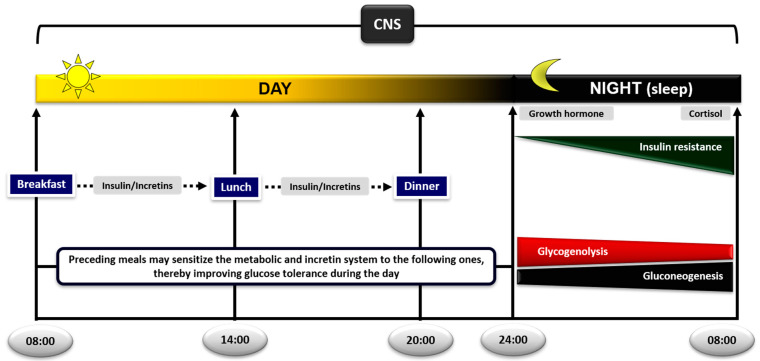Figure 1.
Diurnal regulation of glucose metabolism in the postprandial and postabsorptive state. The sequence of meals plays an important role in postprandial glycemic responses; preceding meals sensitize the metabolic and incretin system to the following ones, thereby improving glucose tolerance during the day. During sleep at night, the gradual development of insulin resistance, due to growth hormone and cortisol surges, ensures that blood glucose levels will be maintained within normal levels until awakening, by switching from glucose to nonesterified fatty acid (NEFA) oxidation in skeletal muscle. The increase in lipolysis and supply of NEFA to the liver and kidneys will also ensure stimulation of gluconeogenesis and glucose production (CNS: central nervous system).

